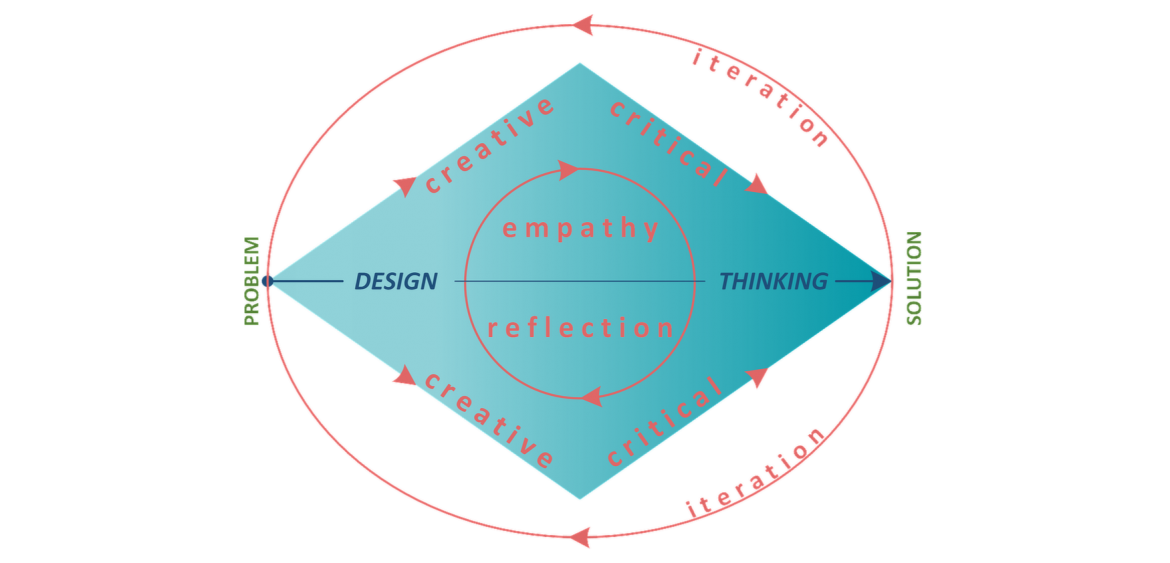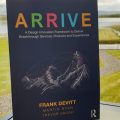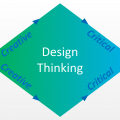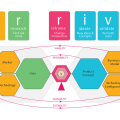The most-wanted employee skills
Design thinkers make better employees, because a design thinking mindset embeds the most-wanted employability skills of critical thinking, creativity and empathy.
Critical thinking, creativity and empathy are among the top generic skills required of employees. It’s easy to see why. Critical thinking, creativity and empathy are meta skills that transcend sectoral specialties and are foundational to performance in all areas of work as well as broader life. In addition, creativity and empathy, are among the skills still inaccessible to modern AI, and hence they are a necessary timely complement.
Of course, most employees need the functional skills and competencies specific to the sector or activity in which they work, e.g. system architecture and coding skills for software developers; accountancy qualifications for accounting consultants; engineering skills for engineering departments and product development organisations; academic skills (teaching, research, pastoral) for universities.
But, is there any employer that wants a ‘brilliant’ software developer who codes what he or she wants rather than what Marketing or customers need? Or, who spends too much time trying to perfect an esoteric background feature rather than creating a simpler way around it to allow focus on more important stuff. Or, who insists that there is only the one ‘correct’ way to achieve an outcome and refuses to look for or consider other possibilities. Or, who thinks ‘users’ just don’t understand and therefore must be ignored. I wouldn’t want such an employee.
Critical thinking, creativity and empathy are in short supply
However, critical thinking, creativity and empathy are in short supply. I was about to say their prevalence had diminished over recent years, which is my feeling, but honestly – and thinking critically – I don’t know that for sure because I haven’t researched it. I am sure that many employers are increasingly searching for these traits, as evidenced by my own experience, that of many of my colleagues and business acquaintances, and the World Economic Forum’s 2023 Future of Jobs Report (Figure 4.3), which lists Creative Thinking, Analytical Thinking and Problem Solving (the latter two are close relatives of Critical Thinking) as top of employer priorities, with Empathy just a little further down the list.
It seems to me that critical thinking is under pressure from a declining attention span with general cynicism and infectious gullibility, fed by fake news throughout social media and further afield. In tandem, creativity has been suppressed by educational, industrial and professional formalism with its absolutist mindset that tends to stunt individual creative capabilities. Meanwhile, the essential characteristics of empathy, viz. understanding and relating to human feelings and behaviours, are not normally afforded much attention by the STEM disciplines, which by their nature are logical and rationalistic in training and practice.
Design Thinking is a powerful antidote
Design thinking has become popular in recent years because it provides a sort of antidote to the above deficits. When people look to Design Thinking to help solve societal, personal or business problems they initially hear about and look for access to design thinking’s methods and processes. But, these are of relatively minor importance, because its greatest and most enduring influence is the enhanced way of thinking, or mindset, that is the enduring and beneficial by-product of embedded design thinking practice.
Design thinking achieves this antidote effect by having at its essence the behaviours of scepticism, reflection, and seeking better solutions through empathy and purposeful creativity.
Scepticism is a first step towards creativity and improvement. By eschewing naïve or unquestioning acceptance, applicable in a wide range of situations, scepticism acknowledges other possibilities. Do you think you know everything about a problem situation or have a perfect solution? It is a hard position to maintain and you should be sceptical of this, because it’s extremely rare that a conversation with another person whom you respect and with whom you empathise does not result in some new aspect of understanding. To be appropriately sceptical means you should pause regularly to query the apparent status quo and your own perceptions and understanding, seek more data and other opinions. This always leads to a more enlightened understanding and hence better ultimate solution. Design Thinkers call this user research, user validation and collaborative working. You don’t need a process; just be appropriately sceptical. If you can’t find a person you respect, maybe that’s a different problem!
Of course, in the real world, sceptical delay can’t be allowed to go on for ever. So, a mature judgement is needed about when to pause and when to proceed at pace. Practising design thinking develops this judgement maturity.
NB, be careful not to confuse scepticism with cynicism. Scepticism is oriented towards the scientific and is good; cynicism is oriented towards the anti-social and is bad.
Reflection is about identifying and consolidating learning, which is an integral early activity of critical thinking that leads to the later stages of inferring and conclusion. Do you think the answer is obvious, even after you have consulted widely? You should not accept a conclusion until you have reflected fully on all the layers of interpretation and understanding that your wide trawl of data probably has uncovered. What are the data telling you really? Where are the embedded assumptions? Are your conclusions justified by empathic understanding of your prospective user and the research data rather than a personal bias? Critical reflection, in whatever form it takes, helps you to be more sure. Design Thinkers have a special name for the outcome of reflections, called reframe(s). Reframes are new mental models based on research which form the scaffolding for creating new solutions.
Creativity is purposeful novelty. It requires leaps of imagination (abductive thinking) to possible solutions, based on problem understanding. The ‘leaps of imagination’ can be off-putting to conservative, traditional, linear thinkers, who are inclined to believe that every step towards a solution must be an inexorable deduction from the previous steps. This is wrong-headed. The design thinking way is to creatively proliferate real solution possibilities based on the soundly formed reframed understanding. In a spirit of empathic enquiry these possibilities (prototypes) are offered to the prospective users for judgement and the feedback is used to support iterative improvement.
When you practise design thinking (properly) you practise appropriate scepticism, empathy, reflection and creativity repeatedly, iteratively, alone and in groups. A design thinking process or framework is useful for guiding newcomers to Design Thinking. Eventually, as you repeat the practice, it becomes second nature and a way of life that makes such good sense you can’t imagine acting in any other way, in any circumstance.
Design Thinkers make better employees
Through practice of the above embedded traits, design thinkers make better employees for the many employers and sectors represented in the WEF’s Future of Jobs report.
posted in | Design, Innovative Organisations, Research






Sorry, the comment form is closed at this time.